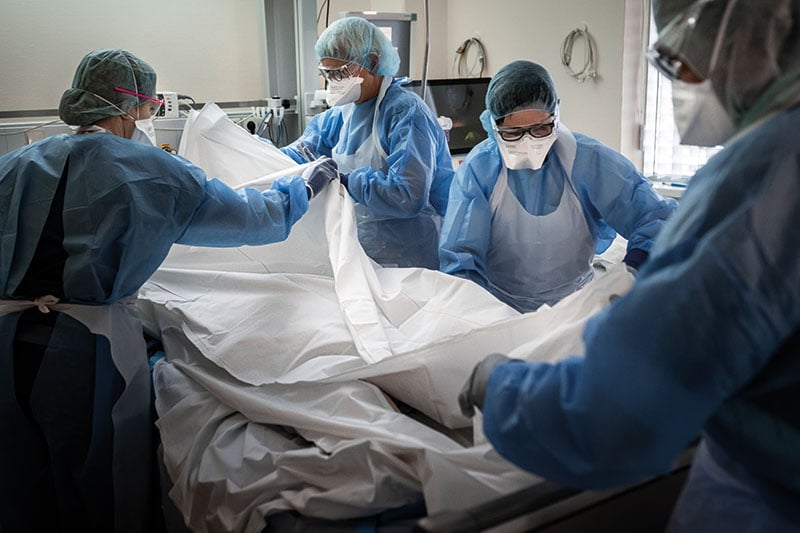In 2020, all the Mediahuis titles used images to tell the story of the pandemic. They were intimate and moving pictures.
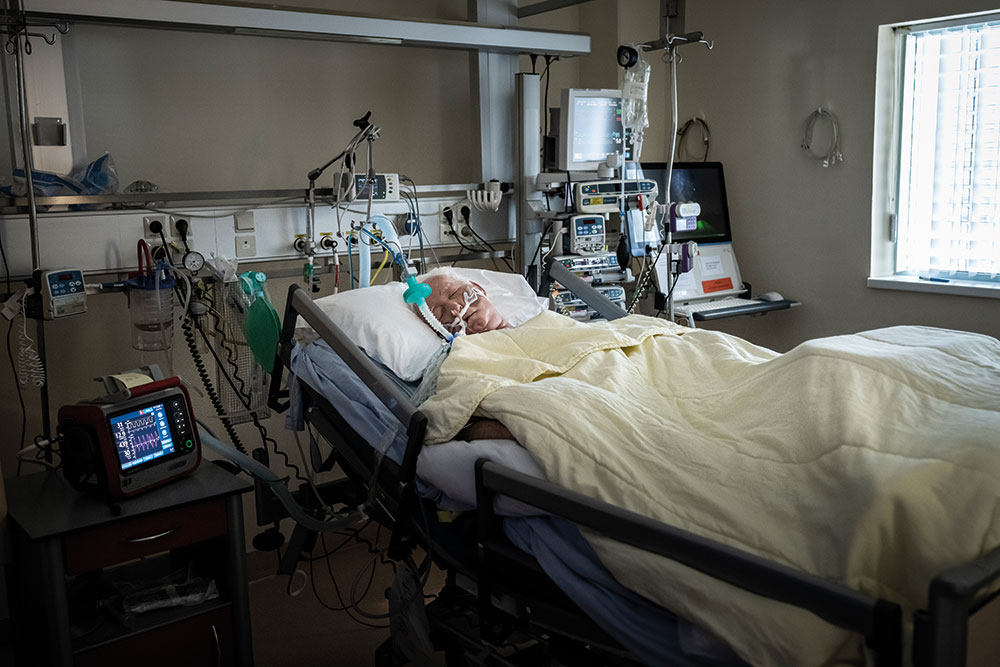
Silver Camera
Kees van de Veen shot a photo series for NRC about Piet Franssen’s illness, farewell, death and funeral, a series that earned him the Silver Camera award.
At the moment of Piet Franssen’s death, his family wasn’t present. They didn’t feel the need to be there. And so the only people around Piet’s bed on 16 April 2020, when the 73-year-old Covid-19 patient’s heart stopped beating, were photographer Kees van de Veen and two nurses. That day was also Van de Veen’s daughter’s seventh birthday.
His photo series about Piet Franssen’s illness, his farewell, his death and his funeral earned Van de Veen the highest award in Dutch photojournalism: the Silver Camera. This is the type of photography that suits him perfectly, Van de Veen said after the award ceremony. “I like to take photos of people as they are going about their daily business. Not of strange things or VIPs, but of genuine emotions. And you don’t get any closer to the emotions than this.”
When Covid-19 reached the Netherlands, Van de Veen didn’t immediately feel the need to go out and take pictures, he says. “I didn’t feel like taking photos of barrier tapes, shopping baskets and 1.5 metre stickers.” But things changed when intensive care units started to become flooded with patients. “That’s where it’s all happening,” he thought. “That’s where history is unfolding. I need to be there.”
Several hospitals refused to grant him access for this assignment for NRC, with the exception of the Wilhelmina Hospital in Assen. As long as the communications department were able to sign off on the photos, he was free to shoot anything he wanted. The only caveat was that the patients should not be identifiable. Which was a shame. “I wanted to highlight the personal story, but that’s very difficult when you can’t show people’s faces.”
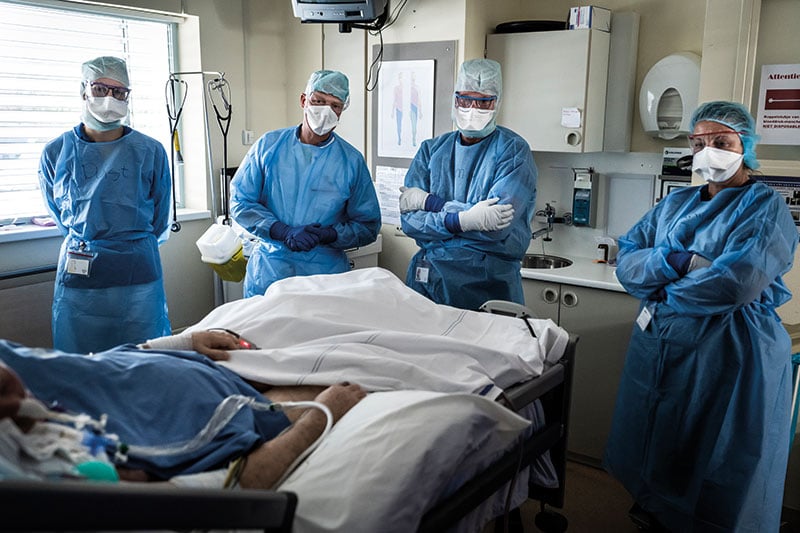
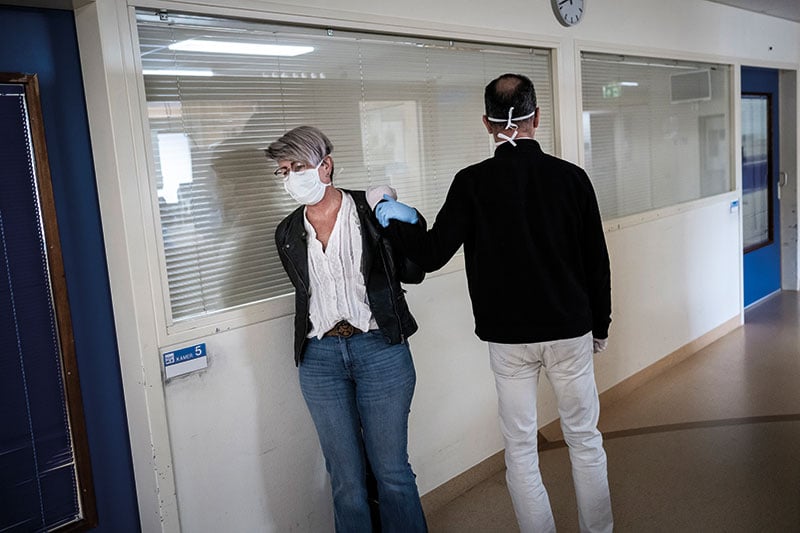
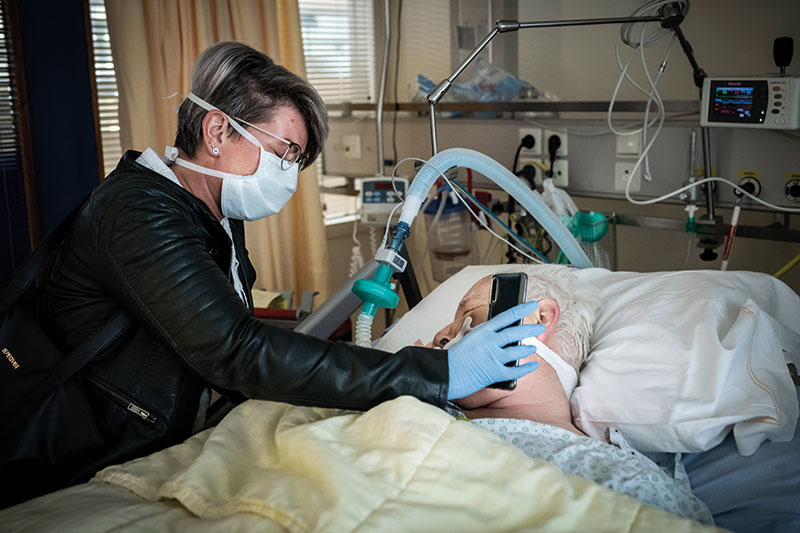
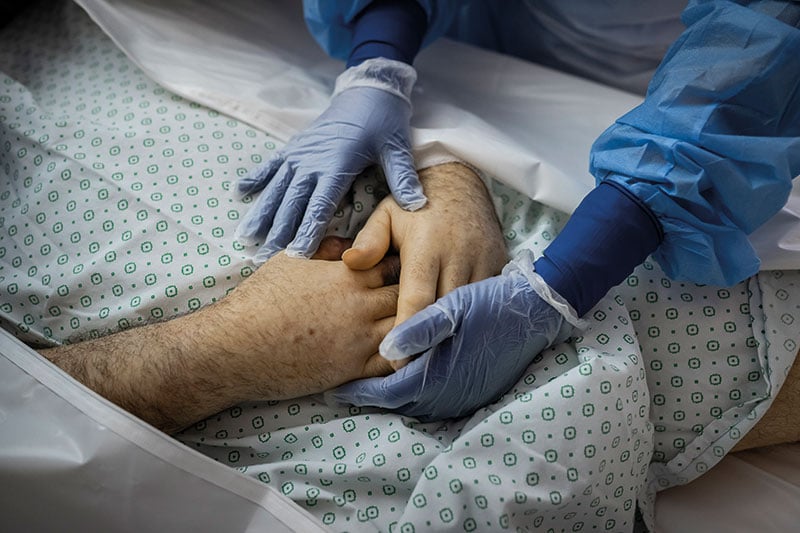
Ending on a warmer note
Then he heard that the children of a man whose health was rapidly deteriorating would be visiting the hospital the next day. “It would be nice, I thought, to give it all a face,” he recalls. A doctor put him in touch with the family, but the Franssens didn’t need to be persuaded. “They immediately said yes. They weren’t focusing on me.”
A few days later, he heard that the doctors would be stopping all the man’s treatment. “I approached the family again with a lump in my throat,” Van de Veen says. “I asked them whether I could be there when they said farewell to their father. And they were OK with that.” So he put on protective equipment and tried to capture their farewells in the most unobtrusive way possible, his glasses often fogging up because of the warm coverall.
He captured everything, right up to the silence after the final heartbeat. Van de Veen didn’t want his series to end with the photo of Piet Franssen being driven to the mortuary: “That would be so cold.” So he drove to Venlo for the funeral, “to end the story on a warmer note”.
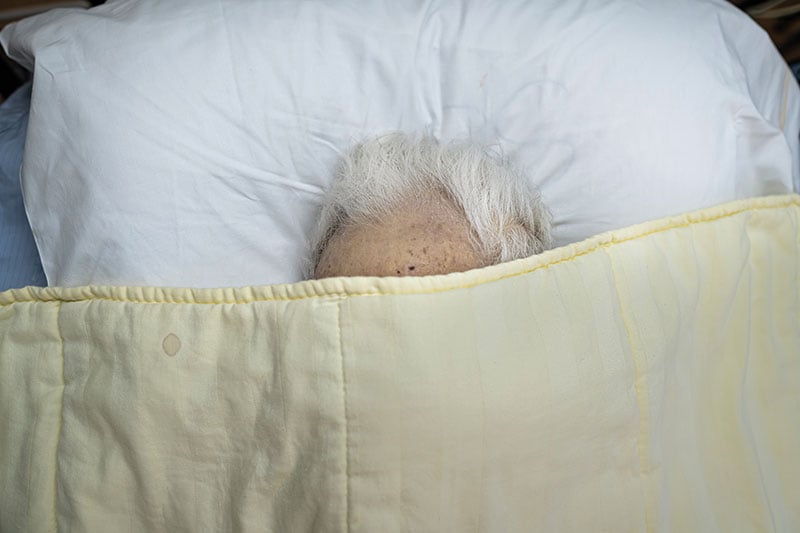
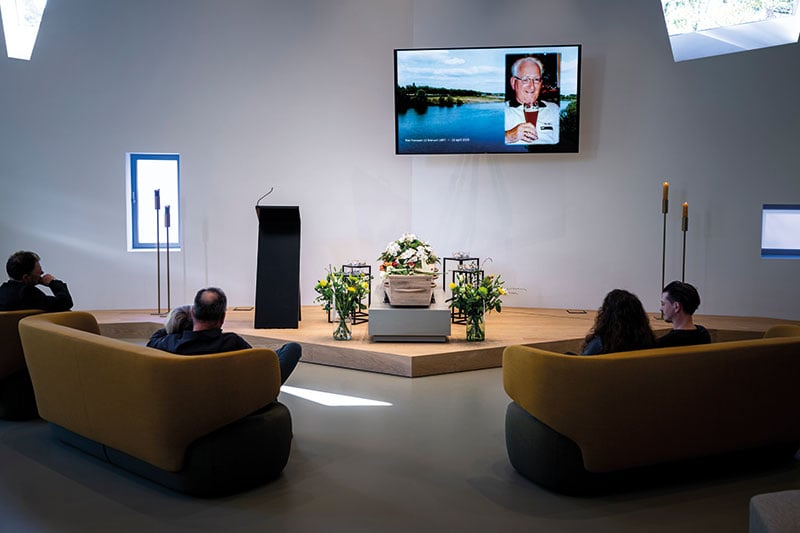
‘Don’t act tough’
“I am so grateful for the trust the family gave me,” he says. “That was the breaking point: that allowed me to capture the impact.” You inspire this trust by treating people respectfully, “not by acting tough or by self-aggrandisement.” Van de Veen’s calm personality no doubt helps.
After the photo series was published in NRC on 25 April, Van de Veen was overwhelmed by the response to his photos. “Including from people I’d never met, who said: ‘I have a family member who is going through the same. Your series gave me the strength to deal with it.’ It’s such a wonderful thing when your photos can do this.”
Van de Veen later visited other ICUs, including two visits to Almelo. But he only photographed the staff there. “When you realise you can’t capture the personal aspect, your photos start to resemble one another. And I didn’t feel like shooting another story like this. It had too much of an impact, including on me.”
Menno Sedee
